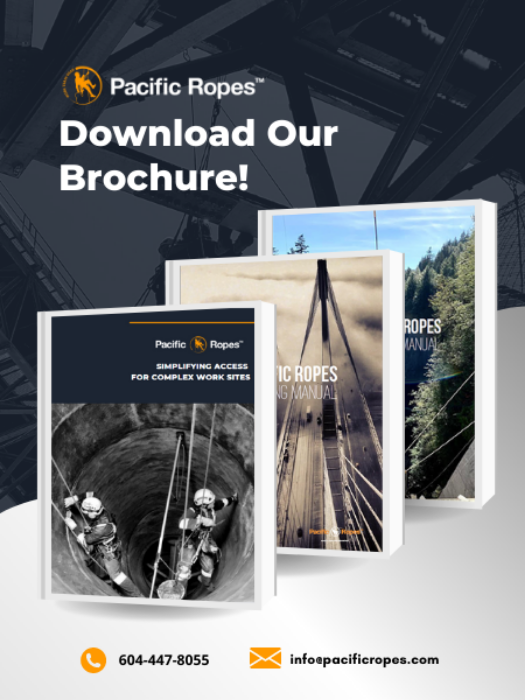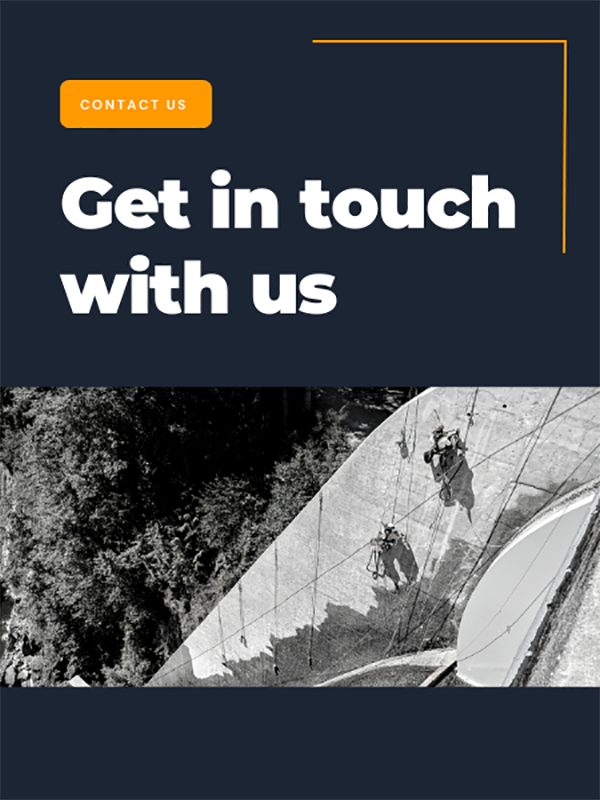Ensuring Safety with Effective Edge and Rope Management
Rope access work often involves navigating complex environments where safety is paramount. IRATA's Toolbox Talk Topics provide a range of safety issues worth focusing on to create a secure working environment. This guide will explore the best practices for edge and rope management and how to effectively apply them to safeguard your worksite.
Understanding the Importance of Edge and Rope Management
Edge and rope management are crucial components of a safe rope access system. Without proper techniques and equipment, risks of accidents increase significantly. By implementing effective management practices, you can greatly reduce these risks and enhance the safety of your work environment.
1. Initial Risk Assessment
The first step in ensuring safe rope management is conducting a thorough risk assessment. During this phase, inspect the entire rope path (and potential path - horizontal movement for example) to identify potential hazards. Your goal is to select the safest route for the rope that minimizes the chances of malfunction or damage.
2. Equipment Check
Ensure that all equipment used is capable of withstanding foreseeable loads without causing catastrophic failure. As per ICOP 1.4.2.4.3, your gear should be robust enough to handle any expected stresses.
3. Protecting Anchor Lines
Anchor lines are integral to rope access systems, and their protection is crucial. Here’s how you can manage anchor lines effectively:
- Free Hang: Whenever possible, rig anchor lines to hang free, avoiding contact with hazardous surfaces like sharp edges or abrasive materials.
- Use of Specific Rigging: Utilize Y-hangs, Deviations, Re-anchors to change the fall line of free hanging ropes away from hazardous surfaces.
- Use of Protectors: When free hanging isn’t feasible, employ edge protectors and anchor line protectors to shield the ropes from damage. Options include:
- Edge Protectors: Rollers, metal edge plates, or edge padding can prevent wear and tear on ropes
- Anchor Line Protectors: Textile sheaths or other encapsulating materials protect against various hazards.
.png?width=908&height=1427&name=IRATA%20Rope%20edge%20management%20blog%20image%20(2).png)
Selection Criteria for Protectors
Choose edge and anchor line protectors based on the following criteria:
- Suitability for Site Conditions: Ensure the protector guards against cutting, abrasion, excessive heat, or chemical contamination
- Compatibility: Match the protector with the anchor line type, including diameter and construction
- Functionality: The design should allow for easy placement and passing of the protector, as well as facilitate inspection of the anchor lines
Applying the RAP Hierarchy
The RAP acronym is a helpful reminder for managing hazards related to ropes:
- R: Remove – Eliminate the hazard if feasible.
- A: Avoid – Avoid the hazard by altering the rope path or work strategy
- P: Protect – Implement measures to protect the rope and anchor lines from the hazard, taking into account the potential rope path/movement when working on the rope.
Below is a graphic provided by IRATA to demonstrate how to prevent damage to your ropes
Examples of Hazards and Protection Strategies
Consider these potential hazards and corresponding protection strategies:
- Sharp Edges: Use edge protectors to shield ropes from steel work, cable trays, or glass façades.
- Abrasive Surfaces: Padding or rollers for coping stones, rock protrusions, or corroded structures.
- Trapping Areas: Ensure protectors cover areas like manhole covers or doorways.
- Heat Sources: Use heat-resistant materials or protectors for hot pipes or exhaust gases.
- Corrosive Substances: Protect ropes from chemical spills with appropriate sheathing.
- Hot Work: Shield ropes from damage during welding or cutting operations.
Different Jobs Require Different Protection
Various edges and surfaces require specific types of protection. Assess the nature of each edge (whether sharp, abrasive, or heated), determine if your ropes are going to be fixed or if the protection needs to follow the ropes, and weather conditions for your job if you are working outdoors. Visit or call our store and share with us the specifics of your site to determine what equipment suits the jobs best. Check out all of our various options at our Equipment Store!
Whether you need canvas pads, rollers, plastic sleeves, and edge protectors, we have something for your job.
These guidelines help maintain a high standard of safety in rope access operations. Proper edge and rope management not only prevents accidents but also fosters a safer and more efficient working environment.
Always remember to stay vigilant and proactive in your approach to managing these crucial elements of your rope access system.
To use this toolbox talk at work, please click here to download the IRATA Topic Sheet No. 6: The Protection of Ropes. At the end of this document is a form in which you can use to record the Toolbox Talk.
Make sure you have the proper equipment to ensure your safety in the field - do you have the right protection for the hazards you encounter on your site?
.png?width=1200&height=800&name=Rope%20Protection%20Equipment%20(2).png)



